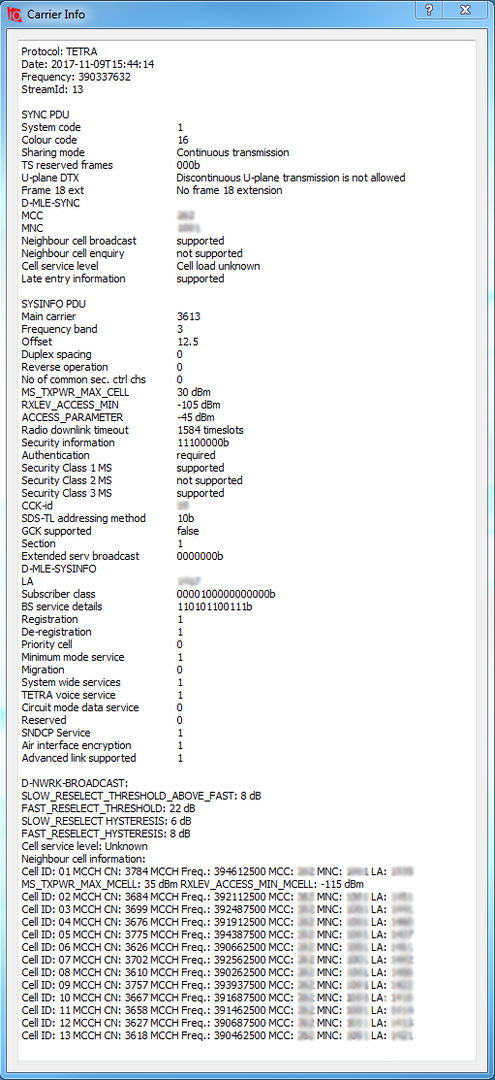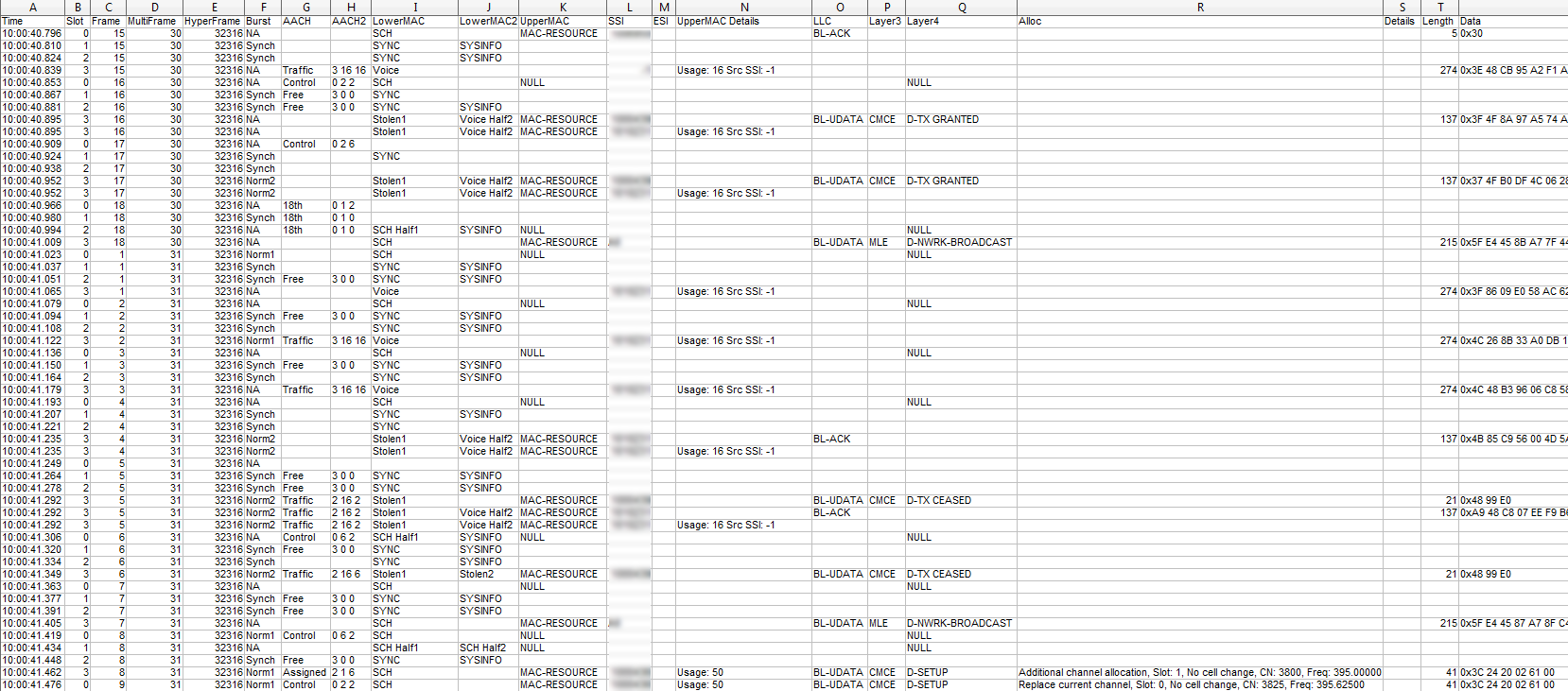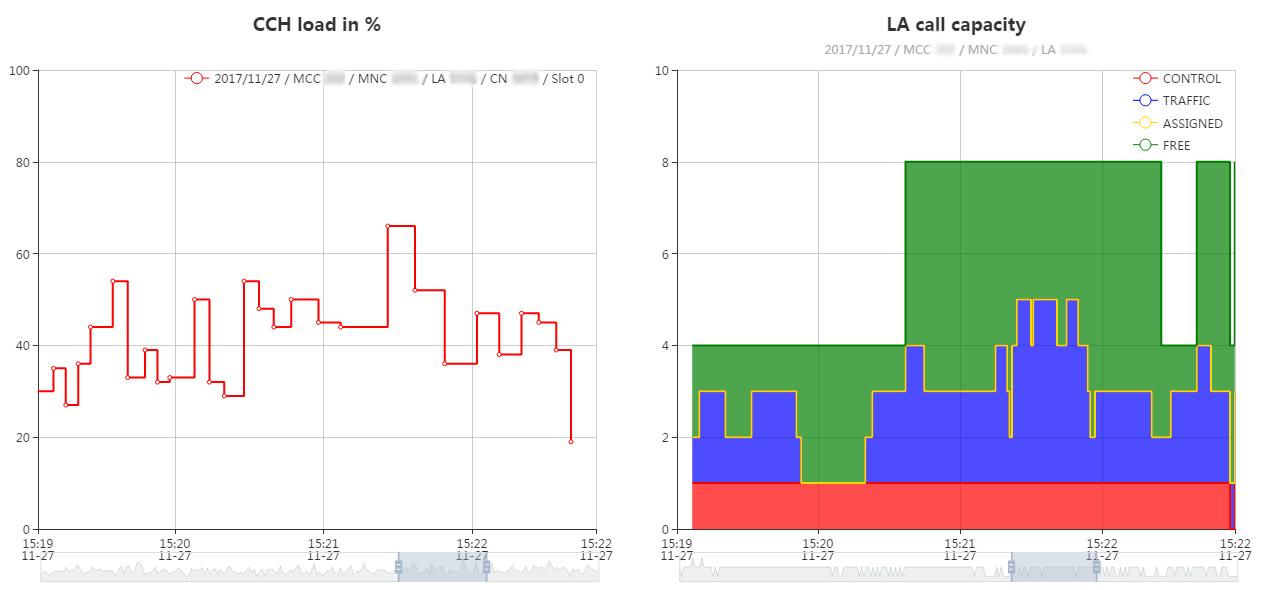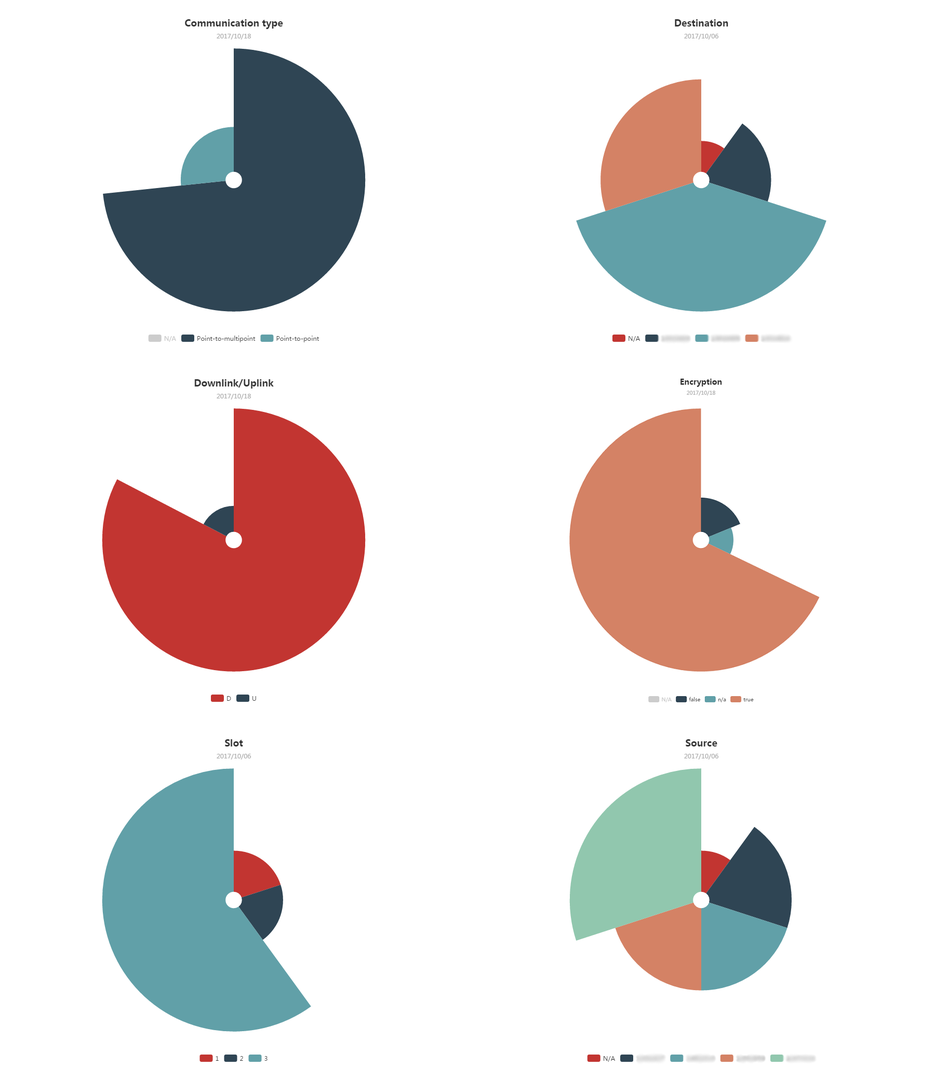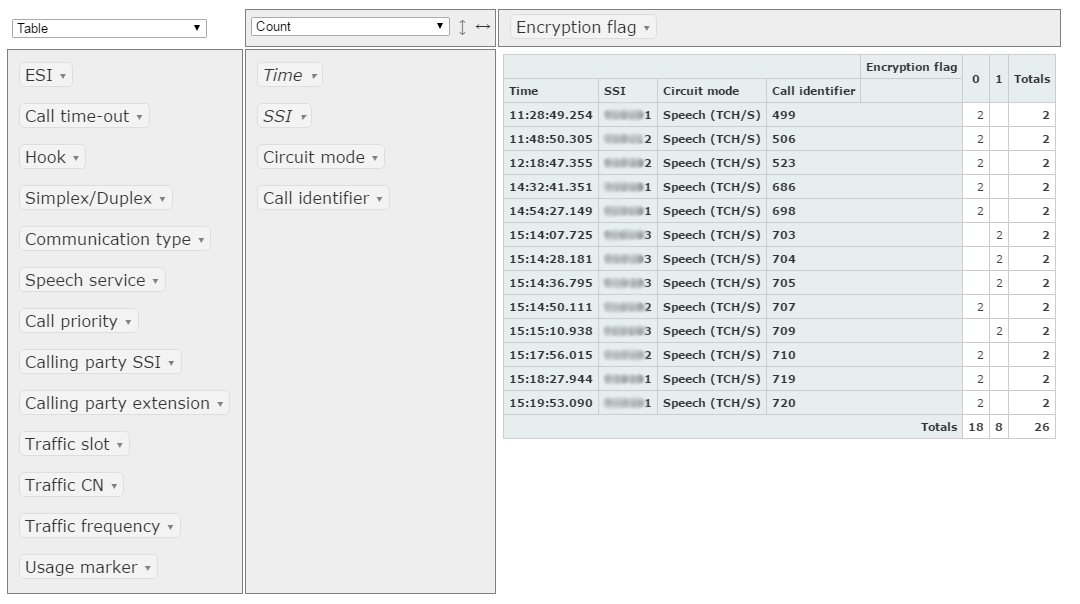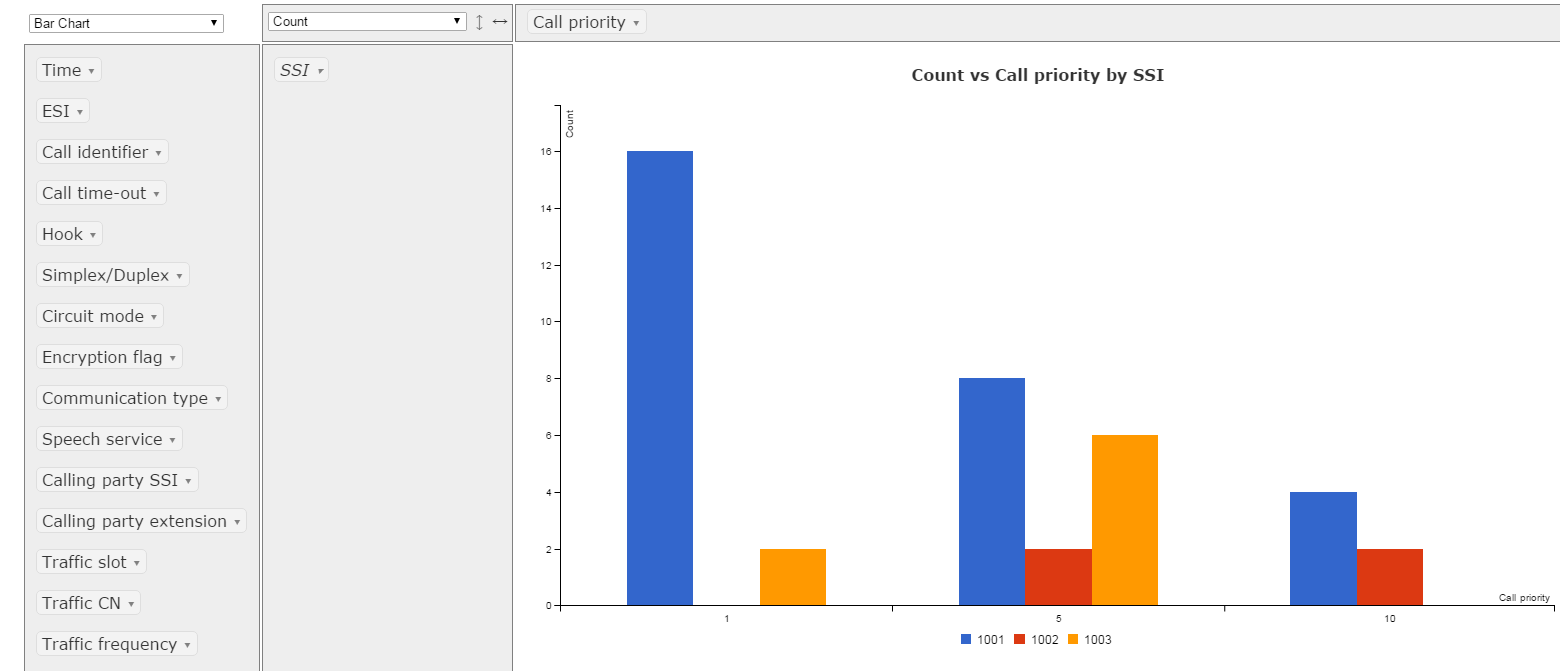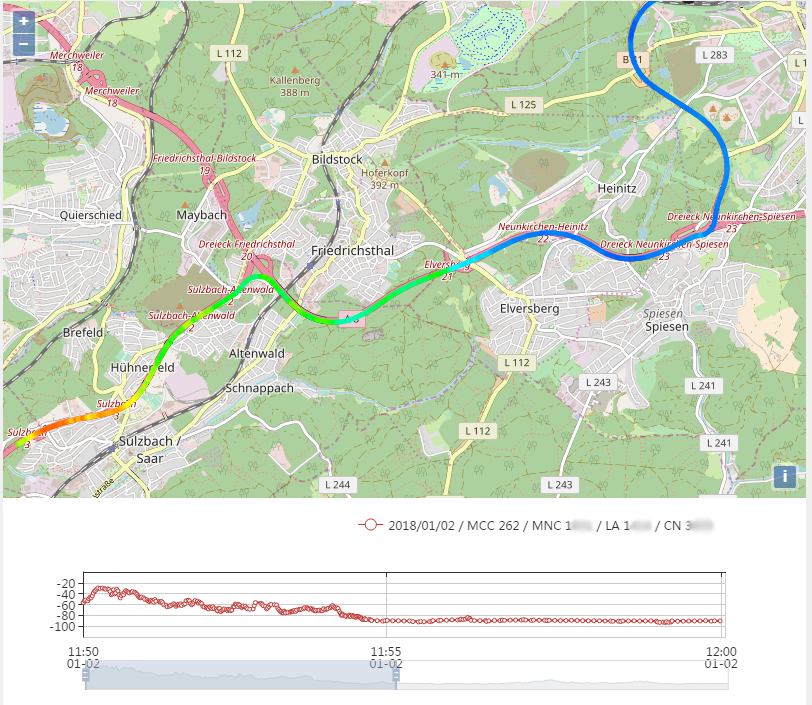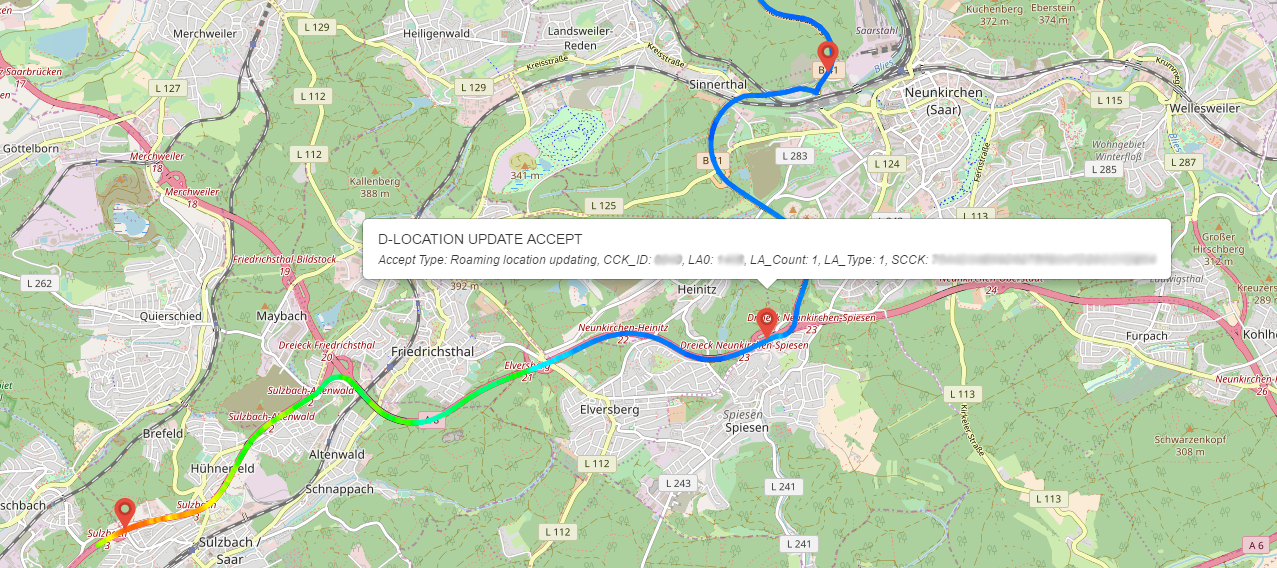DECODIO NET for TETRA - Use Cases
Use Cases:
- Air interface monitoring
- Visualization of broadcast network parameters
- Call logging
- PDU output
- Statistical analysis
- Coverage test with power and quality mapping
- Handover analysis
1. Air interface monitoring
Decodio NET provides various ways of assessing the quality of multiple TETRA carriers.
A real-time demodulation quality view makes it easy to compare demodulation quality between frequencies and to detect co-channel interferences.
When measured with a spectrum analyzer, the power level of a TETRA carrier is often averaged over all 4 time slots, which does not reflect the actual power level of active time slots. Thanks to a very precise real-time signal power visualization, it is possible to analyze the slot occupation of a TETRA uplink frequency (DMO) and to measure the signal power per slot.
The power level of a downlink signal should remain constant, and is an indicator of the signal strength provided by the base station at a given location.
In addition, meaningful qualitative values such as bit error rate (BER) and measure erasure rate MER) can be collected for accurate evaluation of the demodulation quality.
Use cases:
- Co-channel interference detection
- Radio interference detection
- Per slot power monitoring
- Demodulation quality evaluation
2. Visualization of broadcast network parameters
Decodio NET provides an overview of all the available TETRA carriers with detailed information about the transmitted network parameters.
For each carrier, the user can display a full listing of the parameters broadcast by the base station, such as neighbor cell information, encryption and handover parameters.
The status of a network can be closely monitored thanks to a hierarchical view of the load and capacity of the various cells and control channels.
Use cases:
- Network troubleshooting
- Configuration tests
- Live traffic measurements
- Network capacity monitoring
3. Call logging
All calls and data messages (such as text messages) are decoded and aggregated in a call list, along with their associated metadata.
Voice content can also be automatically recorded.
Use cases:
- Verification of channel/group/coverage assignments
- Logging of call duration for load analysis
- Logging of call metadata for evidence purposes
4. PDU output
Every transmitted TETRA protocol data unit (PDU) can be logged into a file and saved to disk for further analysis in a spreadsheet such as Microsoft Excel.
Based on the generated listing, pivot tables can also be exported in the optional
DECODIO ORANGE
component for a more refined analysis (see below).
4.1 Mobility Management PDU
The “Mobility Management” PDU are separately logged and offer a detailed list of registrations and authentications in a location area.
4.2 SETUP PDU
The “Setup” PDU listing provides details about the allocated calls, such as call ID, destination, simplex or duplex operation, encryption, communication type and priority.
4.3 RELEASE PDU
Information about released connections are generated in the “Release” PDU listing, which contains all disconnection causes.
4.4 SDS PDU
A separate list for data messages is generated, containing the message contents as well the message type (e.g. text messaging, location information).
4.5 RADIO INVENTORY PDU
A separate PDU listing provides a comprehensive overview of terminal registrations and handovers in a location area, and allows to establish the radio inventory of a location area.
Use cases:
- Testing and debugging
- Detailed analysis of network behavior
- Radio inventory
5. Statistical analysis
With the optional component DECODIO ORANGE , the PDU output files from Decodio NET can be analyzed. This gives the operator access to detailed call and load statistics through an easy-to-use interface.
5.1 Load and capacity
The number of simultaneously allocated calls and the total capacity in a location area over time can be displayed.
This allows to analyze the network’s response to traffic peaks and to ensure that the number of traffic frequencies is adequate.
The loads of the control channels can also be displayed and compared.
Furthermore, the detailed analysis of Layer4-PDUs allows a very deep insight into the allocation and usage of the different time-slots for each channel.
Use cases:
- Load analysis over time
- Network optimization
- Bottleneck detection
5.2 Call statistics
Based on call metadata, various call statistics can be generated, including call length distribution, number of calls by source and destination, encrypted call proportion, communication type distribution.
Use cases:
- Report generation
- Study of network users’ behavior
- Visualization of detailed traffic statistics
- Troubleshooting
5.3 Pivot table analysis
With
DECODIO ORANGE
, data series can be combined at will to generate pivot tables
providing deep insight into the call setup parameters and traffic type (such as encryption, SSI, call ID, allocation information).
Custom statistical visualizations can also be easily created and exported.
Use cases:
- Report generation
- Statistical analysis
5.4 Logging of performance critical parameters
The performance of a system can be evaluated based on parameters such as the time required to establish a new call, or a sufficiently strong downlink signal. DECODIO ORANGE allows to easily produce charts based on user-defined parameters.
Use cases:
- Network coverage and reliability verification
- Network troubleshooting
- Drive-test results visualization
6. Coverage test with power and quality mapping
During a drive-test, DECODIO RUNNER for TETRA continuously generates files with information about signal power, message erasure rate (MER), bit error rate (BER), along with timestamps and geographical coordinates. The data can then be visualized through an intuitive graphical user interface.
Use cases:
- Network coverage measurements
- Validation of performance-critical parameters
7. Handover analysis
With DECODIO RUNNER for TETRA , geographical coordinates are also combined with PDU logs, which allows for a precise localization of events such as handovers and device registrations of multiple terminals in parallel.
Use cases:
- Verification of network coverage and reliability
- Handover analysis of multiple TETRA-radios simultaneously




